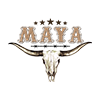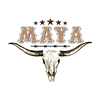From Prototype to Profit: Launch a Branded Custom Apparel Capsule with DTF Transfers & UV DTF — Blank T‑Shirts, Hoodies, Hats and Dropshipping
Introduction — why entrepreneurs choose DTF transfers and UV DTF
Whether you’re launching a side hustle or scaling an established brand, Direct-to-Film (DTF) transfers and UV DTF provide a fast, flexible, and cost-effective production route for custom apparel. These technologies reduce setup costs, allow vibrant full-color prints, and make small runs profitable. Use them on blank t‑shirts, hoodies, hats, and specialty pieces to move quickly from prototype to market-ready capsule.
What this guide covers
- How DTF transfers and UV DTF work, and when to use each
- Step-by-step launch plan for a 6–12 SKU capsule
- Sourcing blanks and evaluating fabric choices
- DTF vs screen printing, embroidery, and print-on-demand
- Pricing, margins, fulfillment, and dropshipping options
- Marketing, photography, packaging, and scaling strategies
- Practical QC checks, wash tests, and legal tips
DTF transfers and UV DTF explained
DTF transfers are printed on a specialized film using pigment-based inks and then coated with a hot-melt adhesive powder. After curing, the film is heat-pressed onto fabric to produce a durable, full-color print with excellent detail. DTF works on cotton, polyester blends, and many other materials—making it ideal for a range of products.
UV DTF uses UV-curable inks and coatings to achieve brighter whites, sharper edges, and specialty surface finishes that catch light differently. UV-cured prints can offer unique tactile or glossy effects and enhanced color stability under retail lighting and photography.
When to pick DTF or UV DTF
- Use DTF transfers for fast prototyping, multi-color photorealistic designs, and short runs where setup cost matters.
- Use UV DTF for specialty finishes, high-contrast white bases, or prints that need to stand out under display lighting.
- Combine DTF with embroidery: DTF can provide complex visuals while embroidery adds a premium, tactile logo or patch.
Step-by-step plan: Prototype to first drop
1. Define the capsule and audience
Decide your target customer and capsule scope. A tight capsule (6–12 SKUs) reduces inventory risk and focuses your marketing: 4 blank t‑shirts, 3 hoodies, 2 hats, and 1 premium sweatshirt is a common and effective mix.
2. Create and optimize artwork
- Design in high resolution (300 dpi) and provide layered files for easy color separation.
- Use RGB or ICC profiles recommended by your DTF printer—DTF color reproduction often expects RGB.
- Prepare versions for dark and light garments (white underbase for dark fabrics).
3. Prototype with DTF/UV DTF
Always print physical samples. Photos rarely capture the true hand, texture, and color of DTF prints. Use prototypes to test color fidelity, adhesion, and wash durability and to create ecommerce imagery.
4. Source blank t‑shirts, hoodies, and hats
Select blanks by fabric weight, fit, and brand alignment. Popular choices include combed ring-spun cotton tees (4–6 oz), midweight hoodies (8–12 oz), and structured caps with sewn eyelets. MAYA TX carries a wide selection of blanks—see our Blank Apparel collection at txmaya.com/blank-apparel. If you’re in Austin, same-day pickup is available for fast turnarounds.
5. Decide fulfillment: inventory vs dropshipping
Dropshipping reduces upfront cost and risk—MAYA TX offers dropshipping fulfillment where we print and ship orders directly to your customers. Inventory gives higher margins and faster shipping control but requires storage and fulfillment processes.
6. Price your products and set margins
Include blank cost, printing/transfers, packaging, shipping, and fees. Aim for gross margins of 40–60% initially. Example: blank tee $8 + DTF $4 + fulfillment $3 + shipping/fees $5 = $20 landed cost. Retail at $40 for 50% gross margin.
7. Launch and measure
Run a small ad test, push social content, and seed micro‑influencers. Use Shopify or Etsy to test demand—optimize listings using SEO keywords like DTF transfers, UV DTF, custom apparel, blank t‑shirts, hoodies, hats, embroidery, print-on-demand, and dropshipping.
Deep dive: sourcing blanks and supplier strategy
Choosing the right blanks impacts perceived value, fit returns, and brand reputation. Consider:
- Fabric composition and hand: ring-spun cotton vs poly blends
- Weight: heavier fabrics often feel premium but cost more to ship
- Fit and size spec consistency across SKUs
- Sustainability certifications (organic, recycled) if that aligns with your brand
MAYA TX’s blank selection and nationwide shipping simplify sourcing; same-day pickup in Austin accelerates prototyping cycles.
Comparisons: DTF vs screen printing vs embroidery vs POD
| Technique | Strengths | Limitations |
| DTF transfers | Low setup, full-color art, quick, works on many fabrics | Hand feel can be slightly heavier than water-based screen prints; adhesion variability requires QC |
| UV DTF | Specialty finishes, bright whites, unique texture/shine | Higher equipment/consumable costs for specialty effects |
| Screen printing | Soft hand, cost-effective at high volumes | Expensive setup for multi-color or photorealistic designs |
| Embroidery | Premium tactile look for logos and hats | Limited detail, higher per-unit cost for small runs |
| Print-on-demand | No inventory, easy testing | Higher per-unit cost, limited branding/packaging control |
File prep and color management tips for flawless prints
- Send vector files for logos when possible; raster files should be 300 dpi at final print size.
- Provide transparent PNGs for transfers that need precise edges.
- Confirm color profiles with your printer and request a proof before bulk runs.
- Include a white underbase for prints on dark garments—DTF and UV DTF handle this differently, so check printer requirements.
Quality control and wash testing checklist
- Run at least 5–10 wash cycles on prototypes with real detergent and dryer to check adhesion and cracking.
- Inspect prints under multiple lighting conditions for color shifts.
- Check seam alignment, tag placement, and any puckering from heat pressing.
- Document SKU dimensions and photography to reduce fit-related returns.
Packaging, branded inserts, and unboxing experience
Small touches increase perceived value and retention. Consider branded tissue paper, a care card that explains print care for DTF transfers, and a thank-you note with a discount code for repeat purchases. If using dropshipping, MAYA TX can include branded packing slips or inserts so customers receive a cohesive brand experience even when fulfillment is outsourced.
Pricing strategies and promotional tactics
- Anchor pricing with a premium SKU (e.g., limited hoodie) to lift average order value.
- Use bundles—tee + hat bundles to increase AOV and move inventory.
- Limited drops and restocks to build urgency and community buzz.
- Offer personalization upsells (names or numbers) using DTF transfers for incremental revenue.
Marketing channels that convert for apparel brands
Proven channels for apparel launches:
- Shopify or Etsy storefronts—optimize SEO using keywords and product attributes. Learn best practices on the Shopify Blog.
- Short-form video (TikTok, Instagram Reels) that shows the print process, unboxing, and lifestyle shots.
- Influencer partnerships—micro-influencers often offer strong ROI for niche apparel audiences.
- Paid social ads for retargeting site visitors and abandoned carts.
- Leverage POD platforms for testing; scale winning SKUs with DTF and in-house or contracted production. See examples from Printful and market research from Oberlo.
Operations: fulfillment, returns, and customer service
Decide fulfillment workflows early. Dropshipping with a partner like MAYA TX lets you avoid inventory headaches: we print and ship orders directly to customers, with nationwide shipping to reach your audience across the U.S. If you hold inventory, set reorder points and negotiate volume pricing for better unit economics.
- Create clear return policies for fit vs print defects.
- Offer tracking and transparent shipping timelines—this reduces support inquiries and increases trust.
- Use automated email flows (order confirmation, shipping, care instructions) to enhance the customer experience.
Scaling strategies: when and how to expand
Scale when a SKU shows consistent demand. Metrics to monitor: conversion rate, repeat purchase rate, return rate, and gross margin. When scaling:
- Negotiate volume discounts for blanks and printing.
- Consider transitioning certain top SKUs to screen printing for lower cost-per-unit at high volumes.
- Expand into wholesale or retail consignments once you have stable sell-through data.
- Test international shipping and localized marketing if demand supports it.
Legal and brand protection basics
- Register your brand name and logo where appropriate to avoid infringement.
- Verify your artwork doesn’t use copyrighted elements without permission.
- Include clear terms of sale, privacy policy, and shipping policies on your storefront.
Real-world ROI examples and side-hustle scaling
Example 1 — Side-hustle launch: 10-SKU capsule, $800 initial investment (samples, blanks, ads). If average order value is $50 and your marketing converts at 2% with 4,000 visitors, that’s 80 sales or $4,000 revenue. With a 50% gross margin, you net $2,000 before fixed costs—profit that can be reinvested into expanded inventory.
Example 2 — Scaling profitable SKU: If a hoodie sells 200 units/month at $60 retail, landed cost $28, gross margin 53%. Negotiating a volume print discount of 15% on printing and 10% on blanks could increase margin to 60% and free cash for new designs and marketing.
Advanced tips for experienced sellers
- Use inventory forecasting by SKU and region—align stock with demand to minimize shipping times and costs.
- Implement A/B testing for product pages (hero images, product descriptions, and CTAs) to improve conversions.
- Optimize shipping zones and use cubing/weight optimization to lower carrier costs on heavy items like hoodies.
- Bundle personalization (name/number) with limited-time promotions to increase AOV and perceived exclusivity.
- Set up manufacturer audits and regular QC signoffs with your partner printer to maintain consistency as you scale.
Where MAYA TX fits in your workflow
MAYA TX supports every stage of this process: design proofing, DTF transfers and UV DTF production, a wide selection of blank t‑shirts, hoodies, and hats, same-day pickup in Austin for urgent needs, nationwide shipping, and dropshipping fulfillment where we print and ship directly to your customers. Check our dedicated pages for more details: DTF Transfers, UV DTF, and Blank Apparel.
Launch checklist — final pre-launch validation
- Physical prototypes for each SKU, wash-tested and QC-inspected
- Product photography and lifestyle imagery ready for launch
- SEO-optimized product titles and descriptions with target keywords
- Fulfillment plan (dropshipping or inventory) and return policy live
- Marketing plan: ads, influencers, email sequences, and social calendar
- Analytics and tracking in place to measure conversion and CAC
Call to action — ready to go from prototype to profit?
Start by ordering DTF transfer samples or UV DTF proofs to validate color and hand feel. Shop our collection of blank t‑shirts, hoodies, and hats, or use MAYA TX’s dropshipping fulfillment to print and ship directly to your customers while you focus on growth. Explore our services and get started:
Prefer to discuss a custom plan? Contact MAYA TX for same-day pickup in Austin, nationwide shipping options, and reliable dropshipping fulfillment that prints and ships for your customers. Launch smart, iterate quickly, and turn your designs into a profitable apparel brand.
Further reading and industry resources: Printful, Shopify Blog, Oberlo.


















